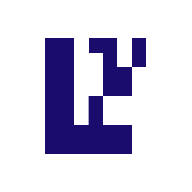Author: Haotian
Why is @ZircuitL2 considered a unique layer2? 1) It is built on the OP Stack Codebase but does not belong to the OP superchain camp? 2) It belongs to the OP-Rollup chain but has not highlighted fraud proofs, with its name and technical details bearing a strong ZK imprint? 3) Clearly unrelated to the AVS security consensus mechanism, yet it provides $Eigen stakers with airdrops, etc. Next, let me briefly share my understanding of the Zircuit chain:
1) The OP Stack clearly provides a foundational technology framework for quickly launching layer2, but many chains, including Metis, Mantle, and Zircuit, have used the OP Stack Codebase but have not integrated into the Superchain strategic route.
The reason is simple: while the super chain will enjoy resource gains from the OP super alliance, it will also be limited in technical autonomy and flexibility, such as fraud proofs. Many layer2 projects in the OP Stack camp have not fully launched their Fraud Proof systems, and the correlation with their choice of framework dependency and neglect of autonomous development is significant.
Zircuit is a typical example; although it is tagged as OP-Rollup Type on L2beat, its overall technical architecture and brand tone give a strong ZK perception impression, leading many to categorize it within ZK-Rollup.
The preference for the ZK technology framework is mainly because the support of ZK technology can make the OP-Rollup framework more reliable. After all, an OP-Rollup without a functioning Fraud Proof is hard to be considered a secure and reliable chain, but with a ZK proof system, the trust environment for state changes built on ZK technology can well compensate for its shortcomings in optimistic challenge proofs. Therefore, in a strict sense, it should be classified as a hybrid Rollup.
In fact, this type of hybrid Rollup architecture design is not new, as another emerging layer2.
@MetisL2
Based on this, it emphasizes differentiation by providing users with a fast withdrawal exit channel through the ZK-Rollup Router, without having to wait for a 7-day challenge period.
2) Recently, Vitalik praised Starknet's performance in optimizing Blob Gas pricing mechanisms and block state compression, which is actually another optimization direction for layer2 after enhancing cross-chain interoperability: improving their own data structure and performance handling details.
Because the future upgrade path of the Ethereum mainnet will trend towards ZK-SNARKs lightweight solutions, if layer2 chains can proficiently apply ZK technology at the underlying level, enhancing performance in data structure, state compression, messaging, etc., they will be closer to the future strategic direction of Rollup-Centric.
Therefore, as a newcomer, Zircuit has made several technical optimizations in detail from the very beginning of its chain launch, such as:
1. Sequencer-level security enhancement (SLS): Many layer2 chains suffer from issues such as Sequencer centralization and MEV, causing DeFi financial application protocols to struggle to develop stably in the layer2 environment.
In light of this, Zircuit has innovatively designed a preventive security architecture for the Sequencer, where transactions are monitored for malicious activity while in the Mempool. Malicious transactions will be subject to a layer of isolation with multiple release conditions to ensure the smooth and safe execution of normal transactions; this method of adding a layer of security checks in the Sequencer component can identify potential MEV behavior, providing a fairer execution environment for DeFi applications.
2. Modular Proof system: The ZK-Rollup paradigm of layer2 chains has a clear finality advantage over OP-Rollup chains, but at the same time, it incurs additional costs for computation, generation, and verification of proofs. These costs are not within the scope of reducing layer2 gas through Blobs blocks on the mainnet, so ZK-Rollup layer2 needs to find ways to reduce ZK proof costs.
To address this, ZIrcuit adopts two paths, Template Proofs and Proof Aggregation, to optimize costs: template proofs are a transitional solution that uses simplified proof templates to maintain the update verification of the base state, without having to generate complete proofs for each batch to reduce costs; proof aggregation collects multiple unverified proof tasks and generates proofs in parallel through specific circuits and general circuits, ultimately aggregating these proofs into a single proof for unified verification.
Clearly, this setup of specific proprietary circuits to accommodate different types of proof systems can significantly reduce the costs of ZK proof generation and verification. This is similar to how Starknet adopts the STARK system and zkSync uses a recursive system, which can better lower ZK overhead.
3. AI-Enabled layer2: Being a newer layer2 chain, Zircuit is naturally suitable for integrating AI model inference, AI Agents, and other AI elements. This is reflected in the AI model analyzing suspicious transactions in the SLS sequencer, automating the isolation or suspension of protocols in special cases, etc.
Above.
As for why Zircuit is collaborating with @Eigenlayer for an airdrop, it is hard to see from a purely technical perspective. I prefer to understand it as Zircuit's strategic support for Eigenlayer in enhancing Ethereum AVS security.
From a broader perspective, AVS, as a fast and secure consensus infrastructure, may help Zircuit's SSL system quickly integrate into other layer2 ecosystems at some point.


